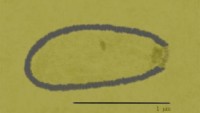Scientists Reveal Cure For Color Blindness, Study Answers Why Color Vision Deficiency Is Common Among Men
| Claire Baguio | | Sep 21, 2015 10:12 PM EDT |
(Photo : Pixabay/Guiliamar) Two researchers from the University of Washington were able to find a cure for colorblindness in squirrel monkeys.
In a recent study, two researchers from the University of Washington have worked with a biotechnology firm to find a cure for color blindness.
Color blindness, also known as color vision deficiency, refers to decreased ability to perceive color differences.
According to Color Vision Awareness, approximately 10 million people in the United States are blind. In the daily UW, their statistics showed that worldwide 1 in every 12 men and 1 in every 200 women are color blind.
Like Us on Facebook
Although physical or chemical injury to the eye may also cause color blindness, its most common cause is genetics: there is a faulty development of the retinal cones, which perceive color in light and send signals to the optic nerve.
The X chromosome holds the genes that are responsible for photopigments. When these genes are missing or damaged, either they are missing the red or the green photopigments or worst, both photopigments, as a consequence, this leads to color blindness.
Color blindness mostly affects men compared to women because they only have one X chromosome, which means if it carries damaged or missing genes, men will immediately manifest color blindness.
Women, on the other hand, have two X chromosomes, which means if one of these chromosomes is damaged and the other is not, she then carries defected genes and does not manifest color blindness.
Jay and Maureen Neitz, from the University of Washington in cooperation with Avalanche Biotechnologies, Menlo Park, found that a single shot in the eye can deliver the genes that can replace the cones in the eyes.
Neitz found that squirrel monkeys are color blind. The monkeys were trained to pick a specific color and the data gathered were collected while the scientists attempt to find a cure for color blindness.
Once they were ready, two of the monkeys received a shot in the eye. After which, the results show that the treatment made to the monkeys was effective. Both monkeys consistently passed the tests while the monkeys that were not treated continued to fail the test they were given.
This study, so far, has only been performed on monkeys, although both researchers hope that their study could then be used to treat people as well.
TagsColor Blindness, Color blindness cure, X chromosome, Genetics, Color vision deficiency, Vision
©2015 Chinatopix All rights reserved. Do not reproduce without permission
EDITOR'S PICKS
-

Did the Trump administration just announce plans for a trade war with ‘hostile’ China and Russia?
-

US Senate passes Taiwan travel bill slammed by China
-

As Yan Sihong’s family grieves, here are other Chinese students who went missing abroad. Some have never been found
-

Beijing blasts Western critics who ‘smear China’ with the term sharp power
-

China Envoy Seeks to Defuse Tensions With U.S. as a Trade War Brews
-

Singapore's Deputy PM Provides Bitcoin Vote of Confidence Amid China's Blanket Bans
-

China warns investors over risks in overseas virtual currency trading
-

Chinese government most trustworthy: survey
-

Kashima Antlers On Course For Back-To-Back Titles
MOST POPULAR
LATEST NEWS
Zhou Yongkang: China's Former Security Chief Sentenced to Life in Prison

China's former Chief of the Ministry of Public Security, Zhou Yongkang, has been given a life sentence after he was found guilty of abusing his office, bribery and deliberately ... Full Article
TRENDING STORY

China Pork Prices Expected to Stabilize As The Supplies Recover

Elephone P9000 Smartphone is now on Sale on Amazon India

There's a Big Chance Cliffhangers Won't Still Be Resolved When Grey's Anatomy Season 13 Returns

Supreme Court Ruled on Samsung vs Apple Dispute for Patent Infringement

Microsoft Surface Pro 5 Rumors and Release Date: What is the Latest?












